We have reached the end of the Genesis cycle, which served primarily as an extension to the Core set. While some of the cards scratched at new directions the main factions could go, further development of those possibilities will be done in more depth in later expansion. For now, we shall look at the last 20 cards of this cycle and see the potential applications.
Retrieval Run
If you are the runner, it is a possibility that your best programs will end up in the discard pile. Sure, you may have extra copies of them in your deck, but it could take time you might not have to dig through your deck. With this card, you can return a program from your discard into play by making a successful run on Archives. And since few corporations bother to defend their Archives unless they suspect you are running Sneakdoor Beta, there is a good chance you will not have to break a lot of ice. So you could use this to get back a program you lost, or to cheaply install an expensive program you discarded in preparation for this.
Pair cards: Femme Fatale, Morning Star, Torch
Darwin
This is pretty interesting. It is an AI icebreaker, so it can get through almost any piece of ice. It is cheaper to install that Crypsis and likely will not cost as much to use as Wyrm. The main catch is that the strength is equal to the number of virus counters on this card. At the start of your turn, you can pay a credit to place a virus counter on it, which builds up very slowly and the corporation can take advantage of by regularly purging viruses. Still, if you are basing your deck around viruses, this is a decent way to augment your breaker suite.
Pair cards: Déjà Vu, Cyberfeeder, Grimoire, Djinn, Surge, Incubator, Hivemind
Data Leak Reversal
I think I have mentioned it before, but this is a key part of the 2015 World Championship Runner deck. It is pretty apparent to see how this card could become so powerful. Sure, you must have made a successful run on a central server to install it, but unless the corporation ices up all the centrals on turn 1, that can be done fairly easily. Plus, it has no use unless you have a tag, but again, it is easy enough to do that, especially as part of the combo involves Paparazzi which makes you tagged, and before that, you could use Joshua B. or John Masanori to tag yourself easily. The big issue is protecting it, which is where Fall Guy and Wireless Net Pavilion complete the combo. With all of that, you can spend 5 clicks every turn to burn down the corporation, and there is little they can do about it without a massive pile of credits, or a few very specific cards.
Pair cards: Joshua B., John Masanori, Fall Guy, Paparazzi, Wireless Net Pavilion
Faerie
Cheap to install and breaks sentry subroutines for free. There is very little to dislike about Faerie. Of course, the drawback is that once you use it in an encounter, you have to trash it. But thanks to recent cards, there is a way around that detail. Still, even before that, Faerie made a good temporary sentry breaker. It is something to have out before you get your main killer so you can face check ice without worrying too much.
Pair cards: Test Run, Clone Chip, Baba Yaga
Mr. Li
Sort of a Criminal version of a draw card. Instead of spending a click for one card, you get to look at two cards, pick the one you want more, and return the other card to the bottom of your deck. Of course, you may have to make tough decisions regarding what you need now as opposed to what you will need in the future. Although, this card has seen less play since the addition of other Criminal draw cards such as Lawyer Up and Fisk Investment Seminar.
Trivia: Mr. Li is an ancillary character from the Android board game. He is a significant member of the tri-maf, and has Sergeant Blaine Louis under his thumb. Of course, it is possible to gain favors out of him, but doing so may mean you will have to do things that you might find distasteful.
Pair cards: Hostage, Calling in Favors, Window
Indexing
This is very powerful. If this is successful, you will know what the next 5 cards the corporation will draw are. There are multiple ways you can use this. You could just put any agendas on top for an immediate repeat attack on R&D. Or you could bury traps and other cards that would immediately benefit the corporation. But probably the biggest benefit is knowing what is coming up, so you can prepare for it in advance.
Pair cards: The Maker's Eye, Data Breach, Top Hat
R&D Interface
Like HQ Interface, only in the Shaper faction and used on R&D. Each copy of this makes you access another card from R&D. With 1 or 2 of these installed, you can lock down R&D and make it so the corporation is unable to surprise you unless they spend a lot of time drawing cards. Of course, against certain decks, being forced to access additional cards out of R&D may lead to hitting multiple traps and a flatline if you are not careful.
Trivia: And just like HQ Intefrace, this is also a reprint. R&D Interface from the Netrunner CCG is exactly the same as this in cost and ability.
Pair cards: Modded, Inside Man, Replicator
Deep Thought
Well, this is interesting. Basically, if you can successfully hit R&D 3 times, then when your turn starts, you can look at the top card of R&D. So if it is something irrelevant, you do not have to spend time and resources attacking R&D that turn, which you might have done without that knowledge. Of course, this card might force the corporation to purge viruses periodically, which means they will lose a few turns, or they might over defend R&D, leaving other servers weakened. Or the corporation might just let you have that knowledge. As such, this card presents possibilities that are up to you.
Trivia: And we have a reprint. Deep Thought from the Netrunner CCG has the same effect, where you put counters on R&D for each successful run, and having 3 or more means you can look at the top card of R&D at the start of your turn. The only difference is the install cost is 0 instead of 1.
Pair cards: Déjà Vu, Cyberfeeder, Grimoire, Djinn, Surge, Incubator, Hivemind
New Angeles City Hall
If you suspect or you know you are going to take tags, then this is a decent card to have. 2 credits to avoid a tag means that you do not have to spend clicks removing that tag in the future. That means you can use those clicks for more important tasks. The catch is you have to have the credits before you would be tagged, otherwise you are unable to dodge it. Plus, as soon as you steal an agenda, you have to trash this, which could mess up your plans early on unless you have a fallback.
Pair cards: Account Siphon, Vamp, Fall Guy
Eli 1.0
For quite a while, this was the word in barriers. It has more strength than its rez cost. It has 2 end the run subroutines. It is a bioroid, meaning the runner can click through the subroutines, but that takes 2 clicks to do so. It has an influence cost of 1, so it could be easily brought into any faction. It is a very powerful piece of ice, even into the late game. That power is probably what led to this card being placed onto the Most Wanted List, making it effectively 2 influence, or 1 influence in faction. So taking this card means you will be taking less from outside your faction, but it could be decent enough to justify that.
Pair cards: Project Wotan, Awakening Center, Tyr's Hand, Brain-Taping Warehouse, Wetwork Refit
Ruhr Valley
Not frequently played, although it seems fairly useful. Comparing it to SanSan City Grid which has a similar cost, you can see why people are less likely to choose this card. The effect is powerful, but it is expensive, and only works on one server. Plus, it means you are unable to have another region in that server. Maybe if you have massive amounts of money, this could be an effective deterrent.
Pair cards: Strongbox, Enhanced Login Protocol
Ronin
An interesting way to set up a kill. With 4 advancement tokens, you can do 3 net damage to the runner, so if you softened up the runner beforehand, that can be lethal. As such, you want the runner to think this is an inconsequential card right up to the point where you activate it. Of course, it is vulnerable in R&D and HQ, and if the runner hits this before you are ready to use it, then the opportunity is gone. Still, it is significant enough that the winning corporation deck at GenCon 2016 made use of this.
Trivia: A Ronin in feudal Japan was a samurai who served no lord and could be hired.
Pair cards: Trick of Light, Chairman Hiro, Mushin No Shin, Hostile Infrastructure, Dedication Ceremony, Bio-Ethics Association
Midori
An interesting idea. With this on the server, the runner is uncertain exactly what they might encounter running on that server. Being able to switch out the first piece of ice means that the runner might not be able to break it, or if they were depending on an Inside Job to get past something big, it may be wasted on a smaller piece of ice. Of course, this is dependent on you having ice in your HQ when that happens, and the new ice comes in unrezzed, so you will need to have enough cash to bring the new ice online.
Trivia: Midori is a Japanese word for "green." Not sure how that relates to this particular card. Also, this is sort of a reprint. Omni Kismet, Ph.D. from the Netrunner CCG has a similar effect, except it can be used on any piece of unrezzed ice in the server.
Pair cards: Akitaro Watanabe, Levy University
NBN: The World is Yours*
And finally, the first new NBN identity. This feels like a very different direction from NBN: Making News. Instead of being able to boost a trace, you can hold an extra card in your hand. Also, the lower minimum deck size means you can build a more efficient deck. The drawback is your influence is reduced to 12, meaning that while you could have 3 copies of Biotic Labor or Scorched Earth, that would take up all your influence. Working with less means you will probably have to choose which archetype of deck you want up front, but you still have a lot of leeway in what direction you want to go.
Pair cards: whatever you feel like
Project Beale
Another 3 advancement tokens for 2 points really benefited NBN, especially with already having AstroScript Pilot Program, as now you had two different agendas that could be scored in one turn with Biotic Labor or SanSan City Grid. But the really interesting feature of this card is what happens when you over advance it. Every 2 counters on this over 3 when you score it lets you place an agenda counter on it, and every agenda counter on this makes it worth an additional agenda point. So with 5 advancement counters, this becomes a 3 point agenda, with 7 it becomes a 4 point agenda, and with a whopping 13 advancement counters, this is worth 7 points and can instantly win a game. Of course, the runner may not let you advance this card that long, so you will have to come up with a way to place a lot of advancement counters on this at once.
Trivia: A reprint, of sorts. Project Babylon from the Netrunner CCG is also worth an extra agenda point for every 2 advancement tokens on it above the requirement of 3, except it has a printed agenda score of 1, meaning you need 15 counters on it to make it a 7 point agenda.
Pair cards: Biotic Labor, AstroScript Pilot Program, Psychographics, SanSan City Grid
Midseason Replacements
And this is how you get all those tags onto the runner for that massive Project Beale. The catch is that it is very expensive, and you can only play it if the runner stole an agenda on the previous turn. Ideally, you would want them to steal something of little consequence, but any agenda will work. Starting at a trace strength of 6 is very good, and since it gives the runner a number of tags equal to the amount by which you won the trace, you can force the runner to spend most or all of their credits to lower the number of tags. Or, if they choose not to spend anything, you can still have a pile of tags to take advantage of. Of course, this does become useless if runner is at the point where stealing another agenda will give them the game, so you have to play this at the exact right time
Pair cards: Closed Accounts, Psychographics, TGTBT, Explode-a-palooza, Lily Lockwell, Exchange of Information, Keegan Lane, BOOM!
Flare
A very expensive piece of ice, but it has a lot of strength and an interesting subroutine. If the runner is unable to break this card, then you start a trace with a base strength of 6. If that trace is successful, you trash a piece of hardware the runner has, do 2 unpreventable meat damage, and the run ends. The meat damage is common enough, but there are few ways to trash the runner's hardware. Still, the expense and high strength mean that the runner will look for ways to get around this ice, and if they get very high link strength, they may be able to get past the trace.
Trivia: The Netrunner CCG has a subtype of ice called Firestarters. These ice are sentries that run a trace with an effect just like the one on Flare. Perhaps the closest card to Flare would be Cinderella, which has the same strength, a rez cost of 8, and a trace maximum of 6.
Pair cards: NBN: Making News, Primary Transmission Dish, Improved Tracers, Aryabhata Tech
Dedicated Response Team
Tagging the runner mid run is typically possible. Plus, sometimes the runner will play cards that tag themselves, such as Account Siphon or Vamp. With this, you can catch the runner by surprise or dissuade them from making runs while tagged. Of course, if you know they are going to become tagged, then you could potentially get more use out of this.
Pair cards: Snare!, Data Raven, Bernice Mai, TGTBT, Manhunt, Prisec
Burke Bugs
It is very hard to come up with a way to make this work. It is free to rez, which could be a plus, but it has no strength, so it is broken or destroyed easily. Plus, the one subroutine starts a trace with a base strength of zero. This means you will be spending credits on that trace to make it successful, and you have to have more credits than the runner for a chance at success. We could pair this with Improved Tracers, but it does not have the tracer subtype, so that would just raise the trace strength by one. Still, maybe we should think of this as not a piece of ice, but instead a tax the runner has to pay.
Pair cards: Security Subcontract, Primary Transmission Dish
Corporate War
Fairly interesting. If you have enough money when you score this, you gain even more money. Of course, if you do not have that money, you lose all your money. So while you could score this easily in two turns, you may want to hold off on doing so to build your credit pool back up, unless you have very little or no credits to lose. Still, most people tend to pick other agendas in place of this one.
Triva: Sort of a reprint here. Corporate War from the Netrunner CCG has an advancement requirement of 3, is worth 3 agenda points, and gives you 12 credits if you have 12 or more credits in your pool, and you lose it all if you do not. Somewhat more risky then than what it became.
Pair cards: money making cards
And that is all for the Genesis cycle. Next time, we return to Haas-Bioroid to find out what they are up to in the first deluxe expansion, Creation and Control.
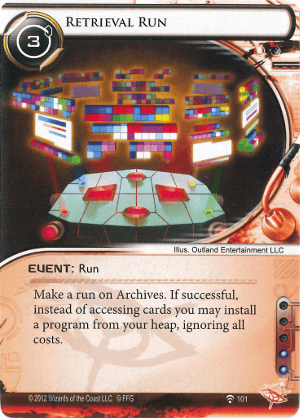
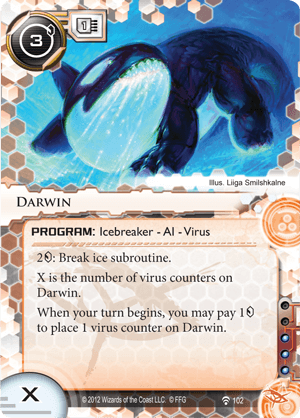
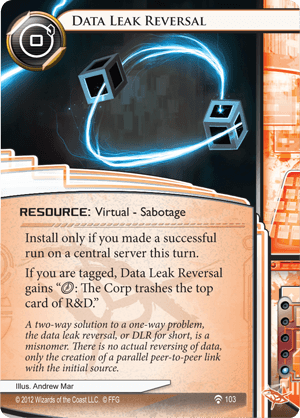
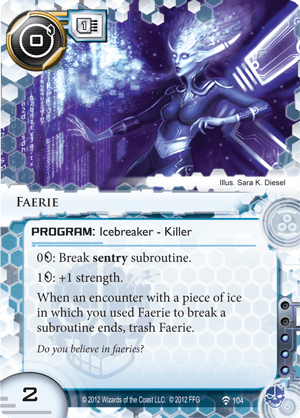
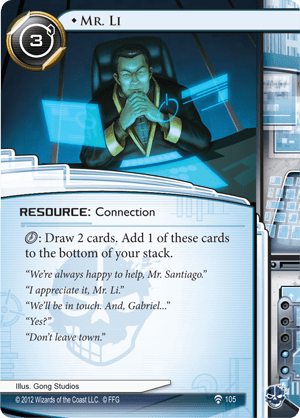

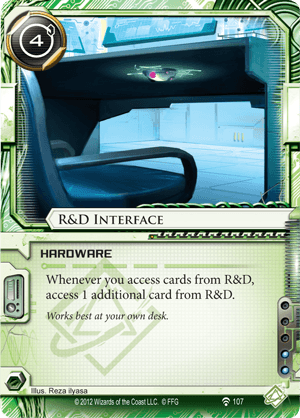
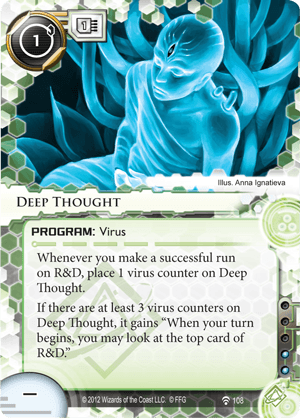
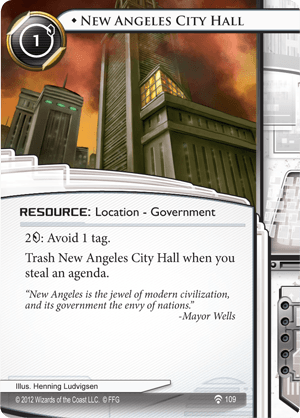
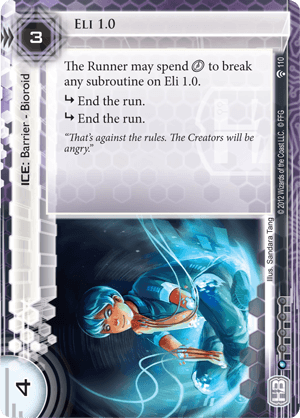
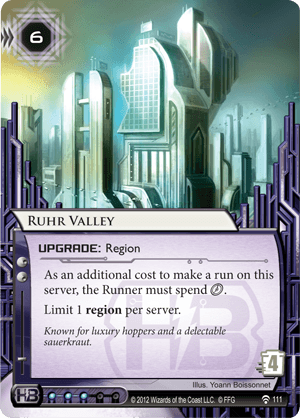

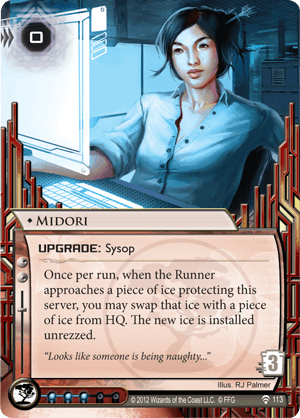
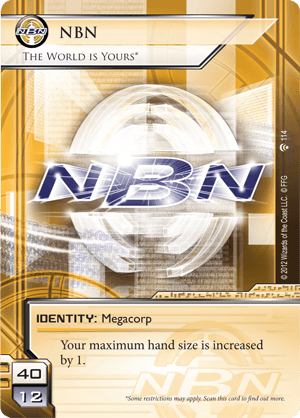
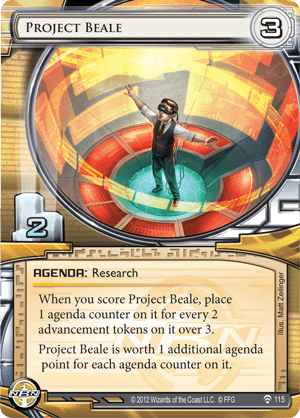
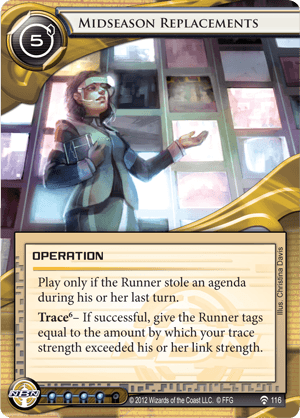
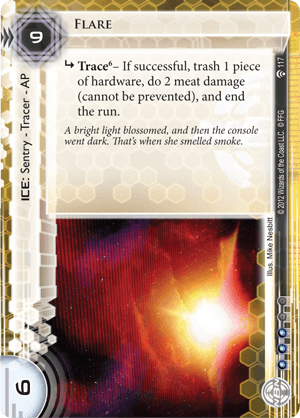
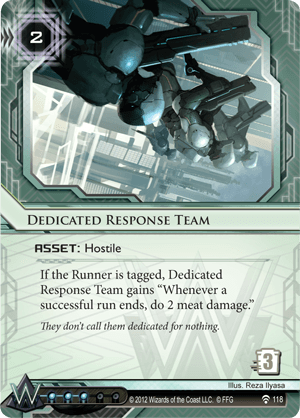
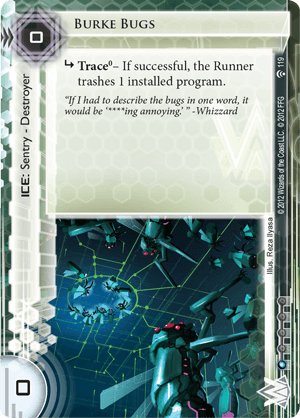
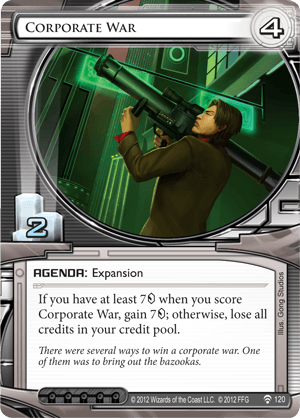
No comments:
Post a Comment